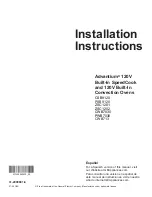
Catalytic enamel surfaces
The back panel, the roof liner and
side liners (if fitted)
are coated with
catalytic enamel
.
Catalytic enamel has very good
self-cleaning properties.
During fan operated cooking,
circulating air in the oven deposits oil
and fat splashes predominantly on the
back panel of the oven.
When this catalytic enamel is heated to
temperatures above 200 °C, oil and
grease deposits are removed
automatically. The higher the
temperature the more effective the
process.
The oven and accessories should be
cleaned after each use. Otherwise
further baking and roasting will cause
the deposits to bake on even harder
and cleaning may become difficult and
in extreme cases impossible.
Note that deposits of spices, syrups
and similar substances are not
removed by this process. These should
be removed while fresh by hand with a
mild solution of hot water and washing
up liquid applied with a soft brush.
Cleaning catalytic enamel surfaces
by hand
Allow the oven to cool down before
cleaning. Danger of burning!
^
The catalytic enamelled back panel,
side liners and roof liner should be
cleaned using a solution of hot water
with a little washing up liquid applied
with a soft nylon brush.
Do not use abrasive cleaning
agents, hard brushes, scouring
pads or cloths, steel wool, knives or
other abrasive materials and do not
use oven spray on catalytic enamel
as the chemicals used in oven
sprays will damage catalytic
enamel, rendering it ineffective.
If using oven sprays on PerfectClean
oven surfaces, the catalytic back
panel, side liners (if fitted) and roof
liner must first be removed from the
oven.
Cleaning and care
55
















































